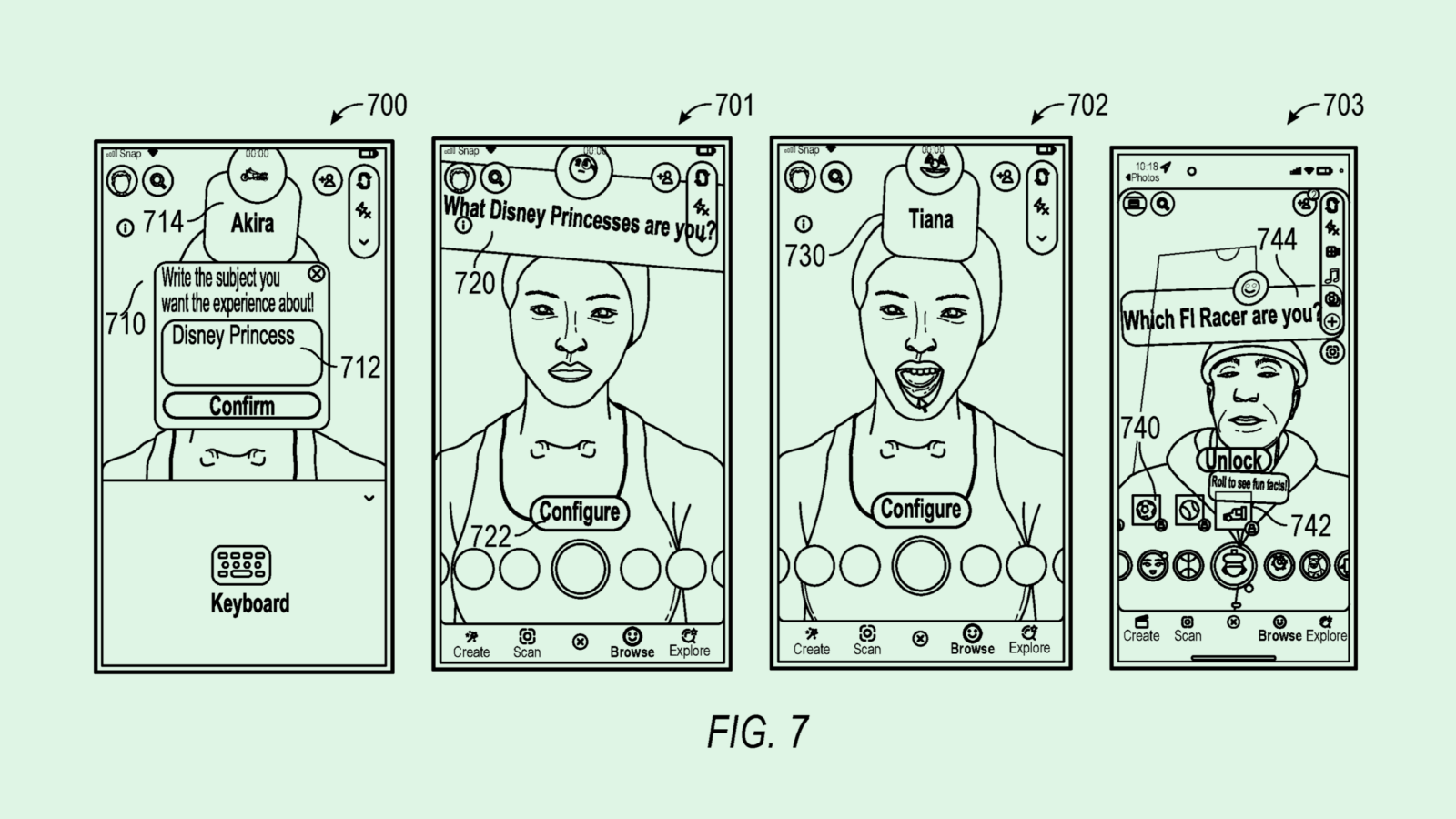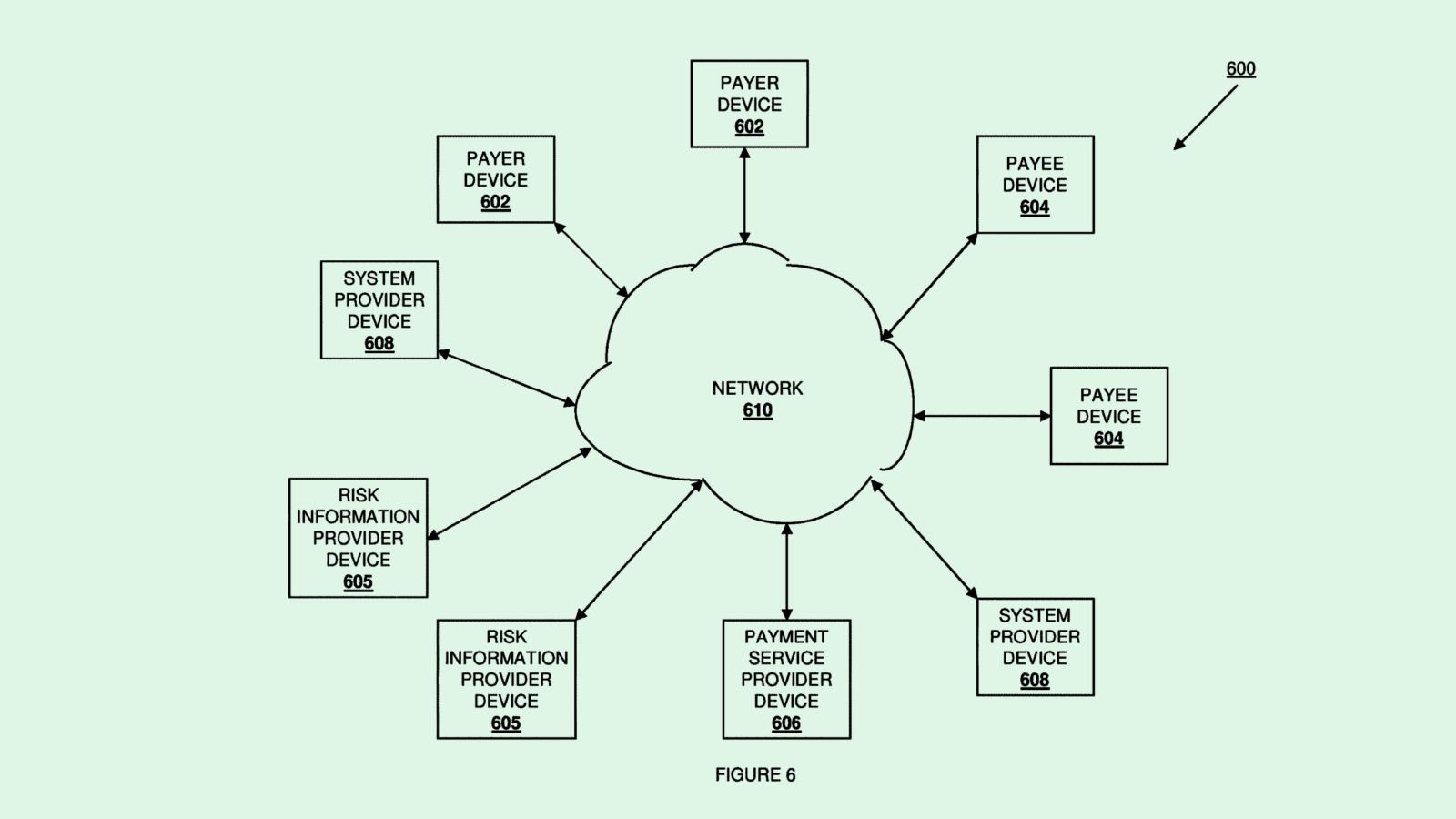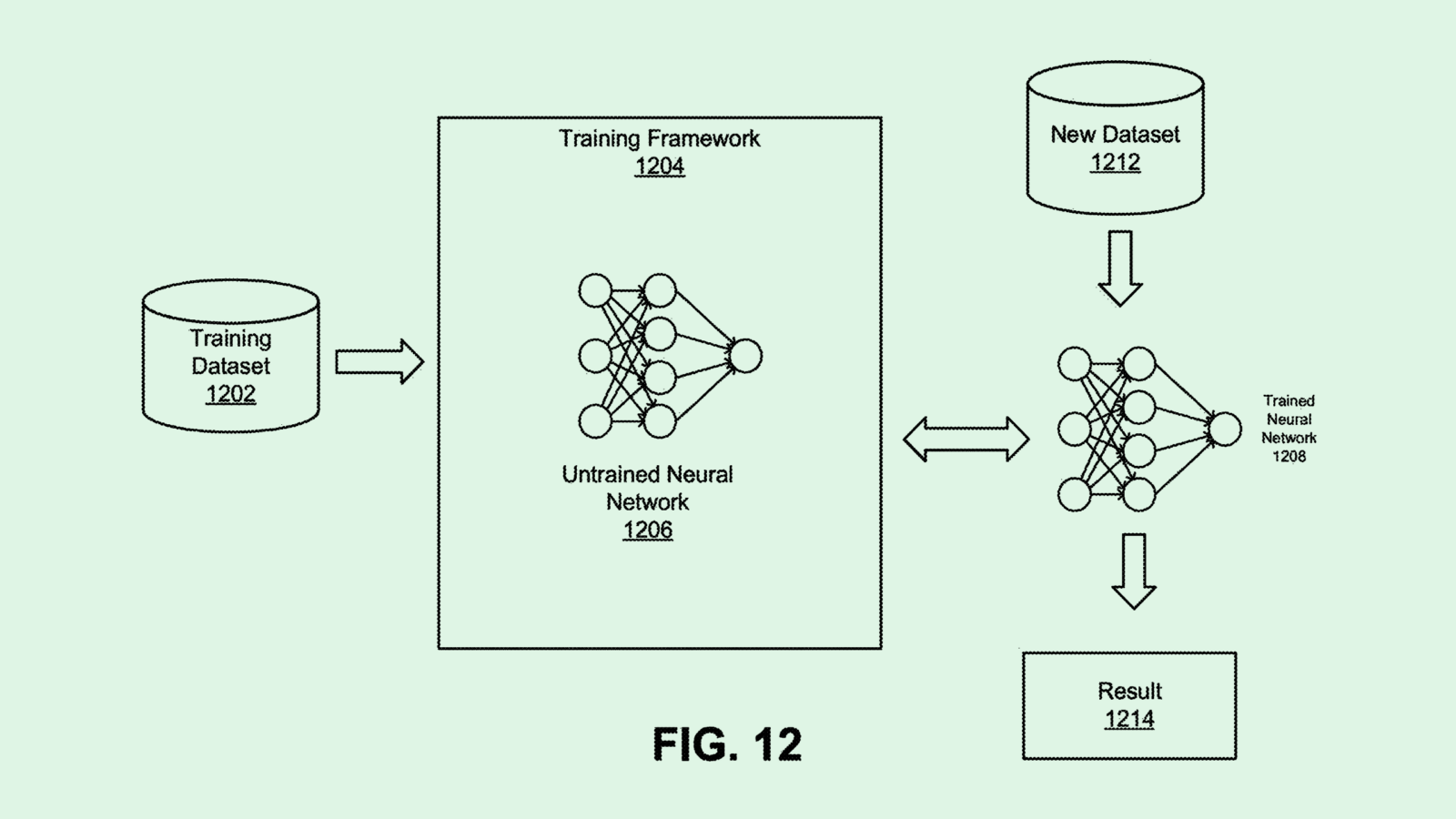Happy Monday and welcome to Patent Drop!
Snap’s patent to use generative AI to make AR quicker and easier could be a bid to attract more developers and brands. Plus: PayPal wants to make crypto transactions less risky, and Nvidia brings safeguards to chatbots.
Let’s get into it.
Snap’s AI Play
Snap wants to put AI to work.
The social media firm is seeking to patent “XR based experiences based on generative model output.” This uses machine learning to enhance extended reality experiences based on user inputs.
The manual creation of XR experiences “can add up to make the creation of high-quality images (e.g., for use in advertising) a significant expense and detract from the overall use and enjoyment of the system,” Snap said in the filing.
Snap’s tech gives users access to a generative AI model capable of creating artificial reality objects in real time in their field of view, whether that be via a smartphone or a set of smart glasses.
When a user gives this system a description, the model first translates its attributes into “data objects,” or lines of code. The extended reality application then takes that data and renders it into the digital object that the user originally described.
Snap noted that this tech can “leverage learned information about users,” such as user profile data, to give the model more context when creating digital objects. This could be particularly useful for advertising.

After Meta announced the sunsetting of its AR studio, Meta Spark, Snap has reportedly been picking up the developers looking for a place to create. Though Meta’s decision left a lot of the AR community confused and blindsided, especially after the debut of its Project Orion smart glasses, the move may be related to its AI work, said DJ Smith, co-founder and chief creative officer at The Glimpse Group.
With generative models “democratizing” the ability to create AR imagery, “people won’t need that studio to create those experiences,” said Smith. “They will be able to essentially go in and ask for something to be made, and the AI system will make it.”
With that in mind, it makes sense that Snap would seek to patent its own generative extended reality tools. “Using AI to create immersive experiences, this is what the whole industry is starting to do right now,” said Smith.
And while Snap is currently winning as a result of Meta’s decision, AI is a whole other playing field, said Smith. The quality of a model is directly linked to the data it’s fed in training — more high-quality, authentic data generally leads to better performance.
And “just in sheer volume, Meta will have a better model,” said Smith. “It just has more data to leverage. Meta has a huge advantage over everyone because they have so much content.”
One thing that these camps have in common, however, is that all roads lead back to digital advertising (where Snap and Meta make most of their money). AI will let developers and advertisers make these types of experiences faster and more efficient, he said.
“That’s their motivation for patenting this and their motivation for putting all of the R&D into this: allowing their users and their brands to make more compelling content,” said Smith.
PayPal Checks for Scams
PayPal wants to make sure your money’s going where it’s meant to go.
The fintech giant is seeking to patent “risk determination enabled” cryptocurrency transactions. That will assess the risk of a crypto transaction before it actually takes place.
PayPal wants to make it so that users making payments with crypto aren’t “forced to transact ‘blindly’ with parties that may be unknown or have unknown histories,” the company said in its filing.
When a transaction request is received, PayPal’s tech sends the payee a risk assessment, requiring the party to meet certain “risk criteria” prior to any money being exchanged. If the payee meets that criteria, the transaction is approved and added to the blockchain ledger. If they don’t, it’s halted or flagged.
This risk criteria may be crypto-specific, including things like account history, previous transaction activity, and previous disputes or reports against the user. Additionally, PayPal may check that the user’s IP address is valid, and that they’re “associated with an approved country or location.”

PayPal wants to be a major voice in the world of blockchain and crypto. The company’s patent history is littered with blockchain-based innovations, and its stablecoin, PayPalUSD, exceeded a market cap of $1 billion a year after its launch. The company’s recent partnership with Crypto.com also further embeds PayPal in the crypto ecosystem.
Still, people have trust issues with crypto, especially as scams continue to climb. According to the FBI’s 2023 Cryptocurrency Fraud Report, more than $5.6 billion was lost in crypto scams last year. And because of the immutable nature of blockchain, clawing back lost funds is incredibly difficult, said Jordan Gutt, Web 3.0 lead at The Glimpse Group.
“That’s why the whole industry has a bad light on it,” said Gutt. “There are a lot of scammers who portray themselves as legitimate businesses or ways to make money fast.”
Tech like this, while “standard for traditional payments,” could help improve trust in the crypto industry by preventing those scams before they happen, he said. Additionally, this could give merchants more peace of mind in accepting crypto, said Gutt, especially as it enables more and more merchants to buy, sell, and hold digital currencies.
“PayPal is able to use their years of experience in traditional payments … to try to make the blockchain world more safe and secure,” he said.
Nvidia’s AI Guardrails
As Nvidia’s ever-popular chips become the backbone of AI development, the company may want to make sure its tech is being used for good.
The company is seeking to patent “runtime alignment of language models in conversational AI systems.” Nvidia’s tech would put a muzzle on large language models, constraining bad output before it gets to users.
Nvidia’s tech relies on a “formal modeling language,” or the process of adding guardrails into models that keep them from generating irrelevant, inappropriate, or inaccurate responses.
First, Nvidia’s tech changes a user input into a short, summarized description and tries to match it with a “dialog flow,” or a predefined guided path for a conversation. If the users’ input matches with a predefined dialog flow, it is used; if not, the system generates a new dialog flow that fits within the system’s guardrails.
By using these predictive dialog flows rather than just making up each response at a time, Nvidia could have more control over a language model’s outputs, making it easier to keep the model from spinning into inappropriate ones.
This overcomes the issue of using fixed rules to keep language models from saying the wrong thing, which are often “ineffective, unreliable, and/or not suitable for the endless possibilities of user inputs or user queries.”

It’s no secret that Nvidia dominates the AI chips market. The company has seen a continued hot streak with its data center sales: It reported $26.3 billion in revenue for the unit in the most recent quarter, largely driven by the AI frenzy. But with great power comes at least a little bit of responsibility.
“[Nvidia] is showing that they care about the ethical use of the technology,” said Brian Green, director of technology ethics at the Markkula Center for Applied Ethics at Santa Clara University.
“They’re also providing resources to people who are producing large language models.”
However, it’s hard to place exactly how much responsibility Nvidia and other chipmakers have in ensuring that their tech is used the right way, said Green. That’s because, while AI can be utilized by bad actors, “it’s not something that clearly has a destructive side to it,” he said. Plus, while the risk of an AI scandal impacting Nvidia’s reputation is low, Green added, “it’s not zero.”
“Chip companies overall would want to try to make sure that the technology is being directed towards good uses,” said Green, “because the more good uses there are, the more chips people will need.”
Extra Drops
- Google wants to make your YouTube videos pop. The company is seeking to patent a system for “enhancing the quality of user generated content.”
- Airbus wants to leave no trace. The aerospace developer is seeking to patent a system for “contrail suppression.”
- Netflix wants to get really, really good at telling you what to watch. The company filed a patent application for optimizing a “deep learning recommender model” with reinforcement learning.
What Else is New?
- Google is preparing an AI tool codenamed Project Jarvis that takes over a user’s web browser and completes research tasks, according to The Information.
- Delta Airlines is suing CrowdStrike for over $500 million after it’s July IT outage caused mass cancellations
- Meta released an “open” version of Google’s NotebookLM podcast generator, which can generate podcast-style audio from text files.
Patent Drop is written by Nat Rubio-Licht. You can find them on Twitter @natrubio__.
Patent Drop is a publication of The Daily Upside. For any questions or comments, feel free to contact us at patentdrop@thedailyupside.com.
Patent Drop is written by Nat Rubio-Licht. You can find them on Twitter @natrubio__.
Patent Drop is a publication of The Daily Upside. For any questions or comments, feel free to contact us at patentdrop@thedailyupside.com.
